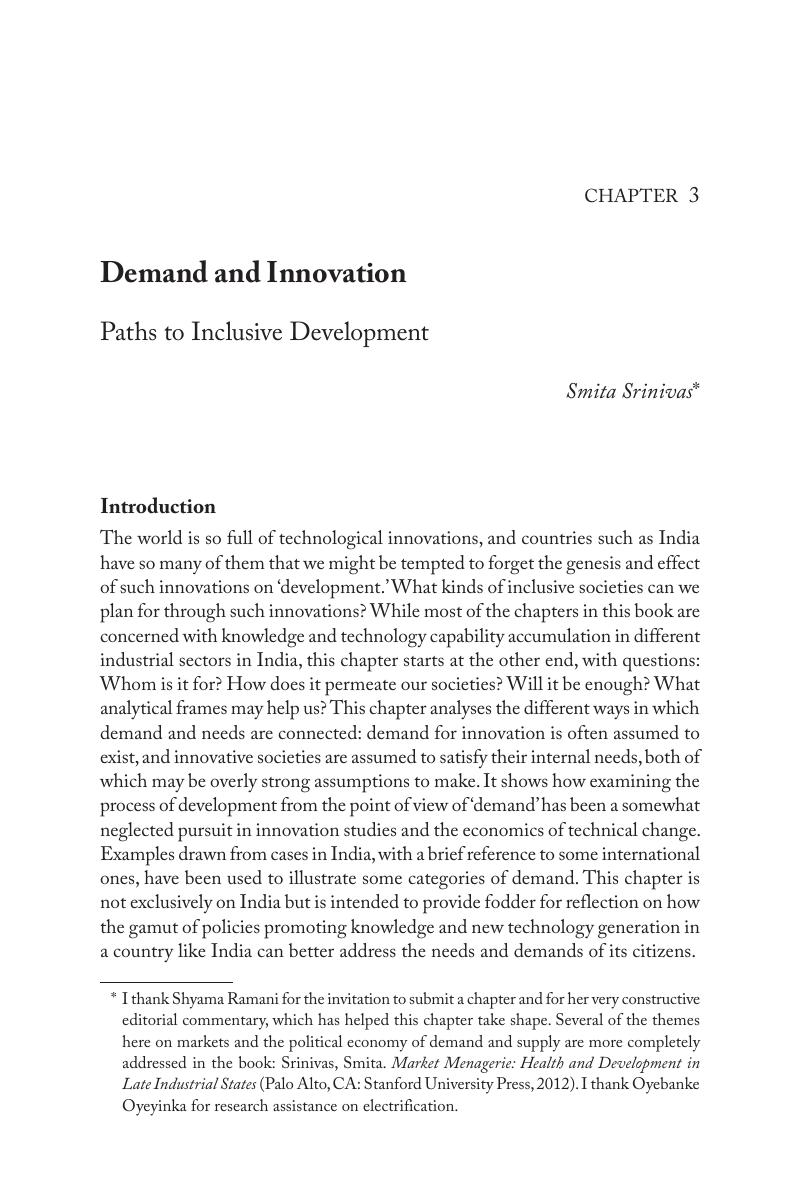Book contents
- InnovationinIndia
- Copyright page
- Dedication
- Contents
- List of Figures
- List of Tables
- Prologue
- Chapter 1 Innovation in India
- I Setting the background
- Chapter 2 The University as a Catalyst of Innovation, Entrepreneurship, and New Markets in the Indian System of Innovation
- Chapter 3 Demand and Innovation
- II Sectoral studies
- III Innovations for inclusive development
- Contributors
- Index
- References
Chapter 3 - Demand and Innovation
Paths to Inclusive Development
from I - Setting the background
Published online by Cambridge University Press: 05 July 2014
- InnovationinIndia
- Copyright page
- Dedication
- Contents
- List of Figures
- List of Tables
- Prologue
- Chapter 1 Innovation in India
- I Setting the background
- Chapter 2 The University as a Catalyst of Innovation, Entrepreneurship, and New Markets in the Indian System of Innovation
- Chapter 3 Demand and Innovation
- II Sectoral studies
- III Innovations for inclusive development
- Contributors
- Index
- References
Summary

- Type
- Chapter
- Information
- Innovation in IndiaCombining Economic Growth with Inclusive Development, pp. 78 - 104Publisher: Cambridge University PressPrint publication year: 2014
References
- 7
- Cited by



